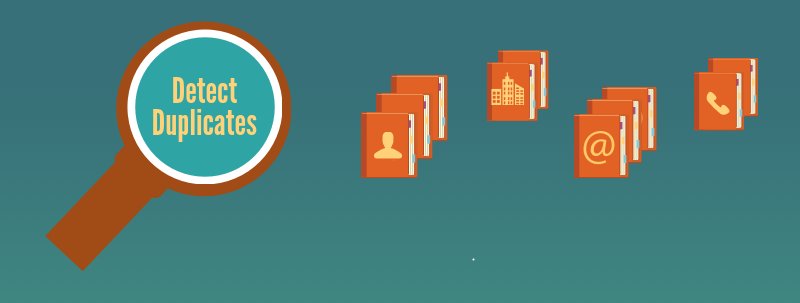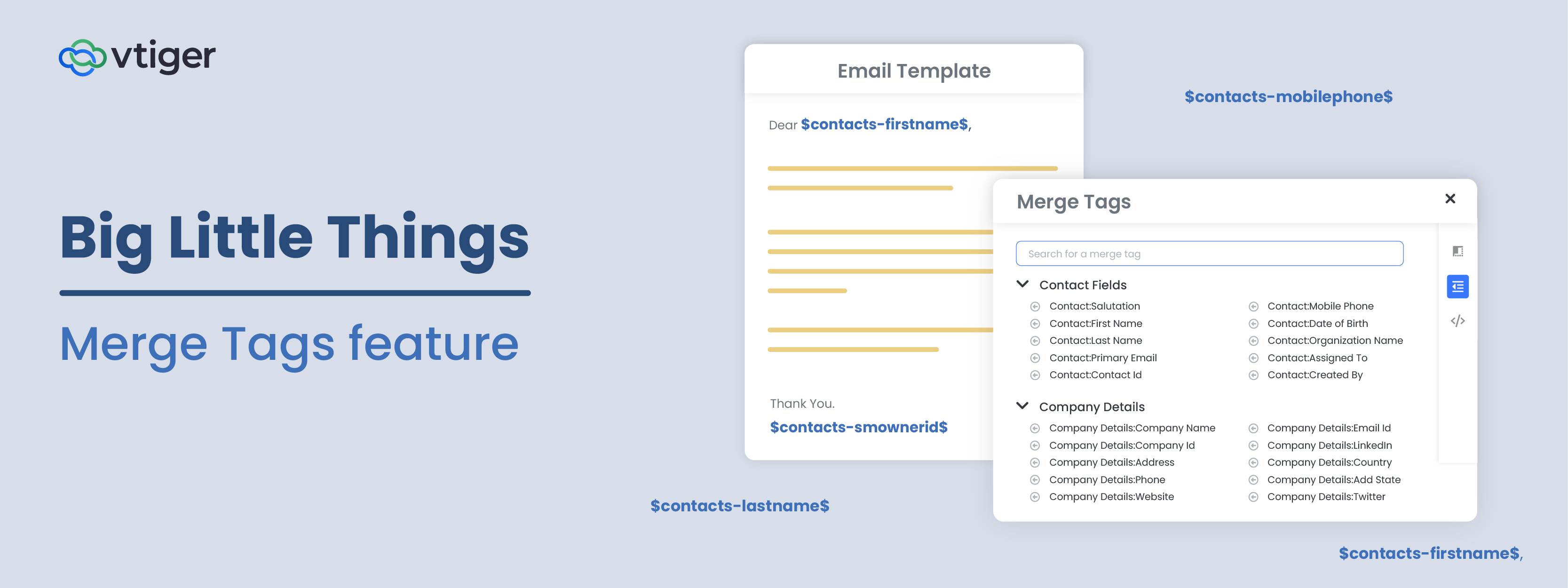If you’ve wanted to upload data to Vtiger from a CSV file, or integrate it with third party software, but were worried that overlapping data in Vtiger and the external source might generate those dreaded duplicate records – we’ve got good news for you. Vtiger now automatically prevents duplicate record creation.
NOTE: In response to some emails we’ve received, we’d like to clarify that this tool is technically more useful than our existing deduplication tools – it provides 24/7 automatic protection against the emergence of duplicates from all sources. Users can set much more complex rules for determining when a record should be considered a duplicate (ex: a matching first name, last name, & company name), and the tool works continuously in the background to prevent duplicates from any manual or automatic record generation source, not just record imports from a CSV file. It even prevents duplicate records from being created when two different records are later edited to match each other. We actually hope that it outright eliminates the need for deduplication later on.
Duplicate records are among the most well known inconveniences of using software to manage important data. They creep in when people add or upload contacts and deals, synchronize data with third party software, and through basically any process that brings data into a CRM – and they wreak havoc on productivity.
Dealing with those extra records does more than waste peoples’ time. The same Bob Smith appearing twice in a sales pipeline, for example, can result in two sales associates trying to win the same man’s business. But while those sales associates may eventually discover and rectify the discrepancy, many duplicate records go undiscovered, and they almost always flow into important but unfortunately inaccurate reports. If those duplicate records happen to be of a contact or a deal, they can also create a disjointed and painfully confusing customer experience, say, when a loyal customer is treated like a stranger because the incomplete version of their contact record is used as the basis of an email or conversation.
Vtiger lets you set-it, and forget-it, to prevent duplicates
With Vtiger’s March update, we bring you a “set-it-and-forget-it” way to prevent duplicate records. You tell Vtiger what combination of fields are together considered unique, and Vtiger makes sure that only one of those combinations ever exists in the system. Whether you consider a record unique based on a single record number, or on a combination of factors like a first name, last name, and company name, Vtiger will check for duplicates before they are created. This check is also done during sync operations (ex: with Google Contacts, Quickbooks, ..etc), with the ability to set either Vtiger or the external system as the master.
Here how to set up duplicate handling it in Vtiger
- Brows to Menu > All Settings > Module Manager > Module Layouts & Fields
- Select the desired module from the dropdown menu
- Click on the Duplicate Prevention tab
- Flip the Enable Duplicate Check switch
- In the text-box, add between one and three fields that together make up a unique record. That could be a unique record number, a first and last name, or a first and last name and an organization name.
- Set one of three ways that you’d like Vtiger to address any duplicates it finds when records are added to Vtiger
- Use only the most recent copy
- Use the internal copy
- Use the external copy
Vtiger handles duplicates from a single record creation, CSV import, workflow, or a sync from a 3rd party application a little differently, so head on over to our duplicate record handling documentation if you’re interested in the nitty gritty details. Once configured, though, Vtiger prevents duplicates that could come from any source.
Have any questions about duplicate record creation, or want to talk about other challenges that stop you from using your CRM to the fullest? Leave us a comment in the box below, or send us an email at [email protected]. We just might build and feature a solution to your problem in our next blog post!




